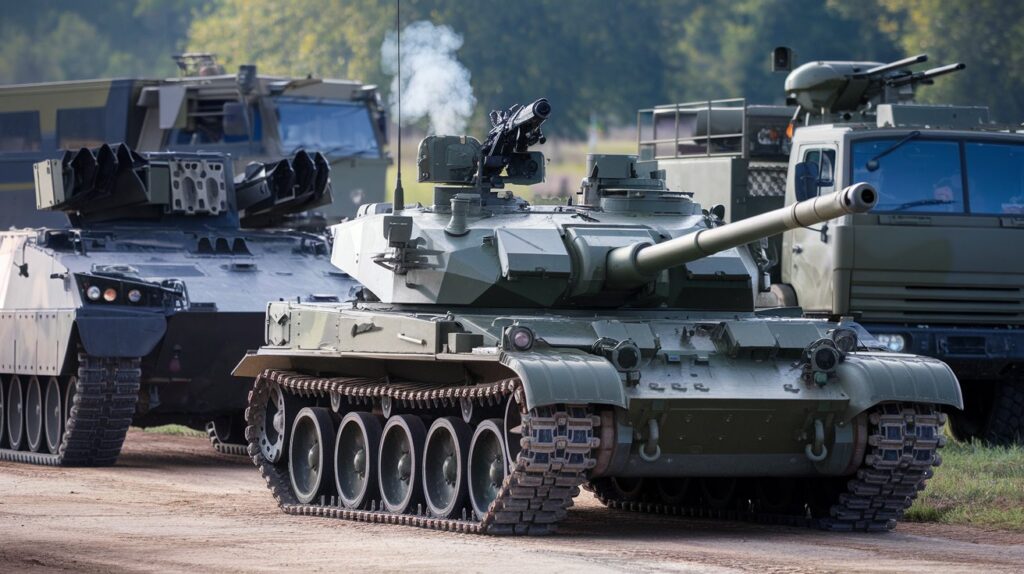The global armored vehicles market is projected to grow from USD 51.6 billion in 2025 to USD 60.7 billion by 2030, registering a CAGR of 3.3%. This growth is largely propelled by rising global security threats, increased defense spending, and modernization programs initiated by military forces worldwide. Nations are focusing on enhancing force protection, mobility, and combat readiness—driving demand for advanced armored platforms with cutting-edge technologies.

Market Catalysts: Security, Modernization & Innovation
The geopolitical landscape continues to witness regional conflicts, insurgencies, and cross-border threats. As a result, governments are prioritizing defense modernization. Advancements in materials science, communication systems, and weapon integration are significantly enhancing the protection, agility, and mission flexibility of today’s armored vehicles.
Download PDF Brochure @
https://www.marketsandmarkets.com/pdfdownloadNew.asp?id=6322755
Key global players—General Dynamics Corporation, BAE Systems, Rheinmetall AG, and Oshkosh Corporation—are investing heavily in R&D to design and deploy next-generation solutions that meet the complex demands of modern warfare. These companies focus on survivability, modularity, and technological upgrades to maintain global leadership.
Segment Insight – Platform: Surge in Combat Support Vehicles
The combat support vehicles segment is forecasted to grow at the highest CAGR during the forecast period. These platforms are essential in enabling frontline operations through logistics, engineering, and battlefield communication. The integration of automation, advanced digital systems, and hybrid technologies in support vehicles reflects their growing operational significance.
Defense forces are now prioritizing logistics efficiency and rapid response capabilities, pushing for vehicles that can perform multiple support roles while maintaining mobility and protection across varied terrains.
Segment Insight – Mobility: Rise of Wheeled Armored Vehicles
The wheeled armored vehicles segment is expected to register the fastest growth due to its cost-effectiveness, agility, and adaptability across urban, desert, and mountainous terrains. Unlike tracked platforms, wheeled vehicles are less expensive to maintain, more fuel-efficient, and quicker to deploy—making them a preferred option for both peacekeeping and combat missions.
This growing preference for wheeled configurations underscores shifting military strategies focused on rapid deployment, urban warfare readiness, and financial sustainability.
Segment Insight – System: Evolving Drive Systems Fuel Market Expansion
The drive systems segment is projected to witness the highest CAGR owing to continuous advancements in vehicle propulsion. Modern drive systems, including hybrid and electric technologies, offer enhanced fuel efficiency, lower acoustic and thermal signatures, and improved maneuverability. These systems also improve survivability by supporting rapid acceleration, tactical evasion, and all-terrain performance—key requirements in asymmetric warfare environments.
Electrification and hybridization trends are further influencing procurement strategies, especially in regions emphasizing sustainability and stealth operations.
Regional Outlook – Middle East Takes the Lead in Growth
The Middle East is forecasted to lead regional market growth, fueled by escalating security concerns, major military acquisitions, and national strategies that promote local defense production. Countries like Saudi Arabia, UAE, Qatar, and Egypt are rapidly enhancing their armored fleets under broader transformation programs like Saudi Vision 2030.
Gulf nations are also fostering joint ventures with global OEMs. Notable collaborations include EDGE Group and SAMI partnering with Hanwha Aerospace, BAE Systems, and Rheinmetall to boost indigenous production capacity. The regional demand spans from main battle tanks to high-mobility light armored patrol vehicles designed for desert and mountain operations.
The adoption of autonomous, AI-integrated, and unmanned ground vehicles (UGVs) is also rising in the Middle East, aligning with global trends and reinforcing the future-readiness of regional forces.
Ask for Sample Report @
https://www.marketsandmarkets.com/requestsampleNew.asp?id=6322755
The armored vehicles market is transitioning toward a future defined by mobility, modularity, and multi-mission capability. With increasing threats and evolving military doctrines, defense forces are rapidly adopting technologically advanced, agile, and cost-effective solutions. Innovations in drive systems, platform design, and localized production will define the competitive edge in this market through 2030 and beyond.
